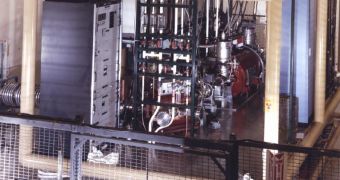The Californium Rare Isotope Breeder Upgrade (CARIBU) project is an improvement to a famous particle accelerator in use by physicists at the US Department of Energy's (DOE) Argonne National Laboratory (ANL) for many years. The experts that devised it took great pride in their work, and recent experiments seem to show that they were right to do so. The ANL team conducted a series of tests with CARIBU, and they managed to bring down a long-standing world record for ionization efficiency of solids in the process. The scientists basically pushed the phenomenon of charge breeding to its limits.
According to officials at the national facility, the Upgrade was capable of obtaining an 11.8 percent ionization efficiency with metallic rubidium particles. This exceeds the previous world record by a considerable margin. Years ago, the Laboratory of Subatomic Physics and Cosmology (LPSC), in Grenoble, France, managed to obtain a 6.5 percent ionization efficiency using potassium particles. That record has not been beaten until now.
“There have been several improvements made that increased efficiency little by little until we finally reached record numbers, and we foresee even higher efficiencies in the future,” explains Richard Prado, who is a senior accelerator physicist at the Argonne Tandem-Linac Accelerator System (ATLAS). The facility has been using chemical elements from across the Periodic Table for years, colliding them against each other to see what comes out. The accelerator operated with beams of stable isotopes, and it represents one of the most long-standing and efficient experiments in particle physics.
“Fundamentally, there are limits to how high an efficiency you can get in a charge breeder, but we can expect a 20-30 percent improvement of current numbers,” says Richard Vondrasek, who is a principal engineer at the ANL. He says that CARIBU was constructed so that physicists could use californium-252 isotopes to create neutron-rich heavy fission fragments, at very high rates. It is estimated that the Upgrade will allow for the production of more than one billion such fragments per second.

 14 DAY TRIAL //
14 DAY TRIAL //